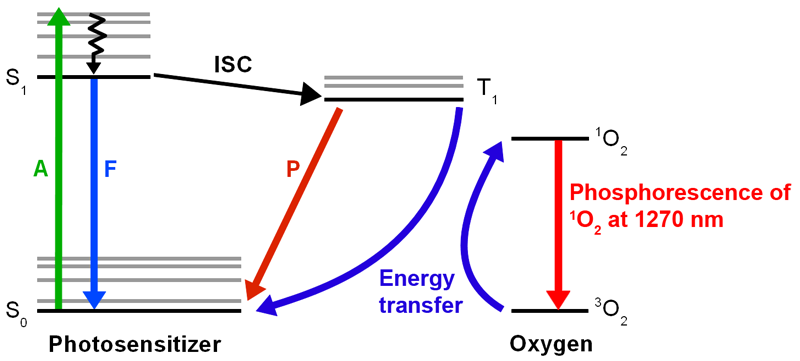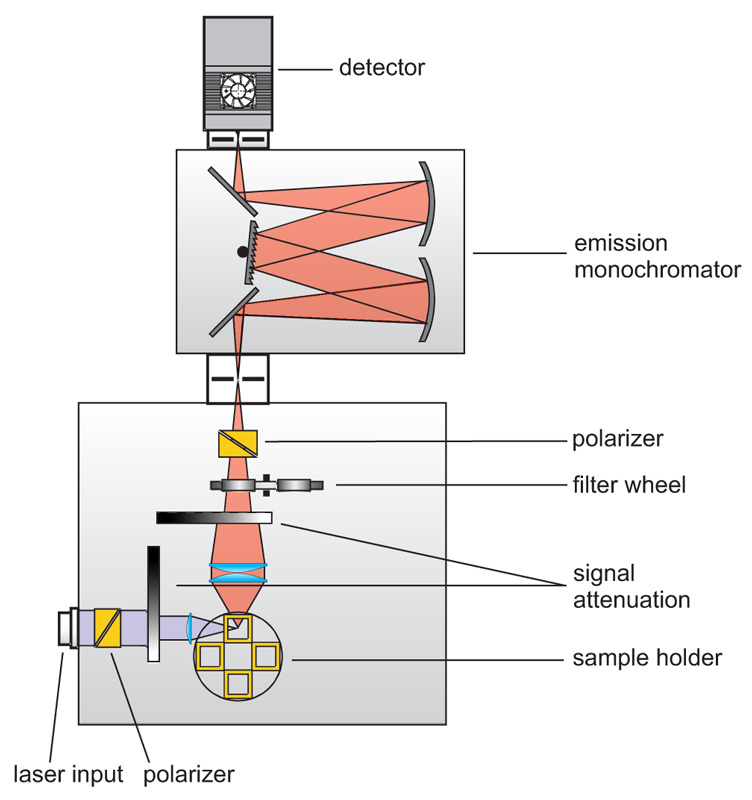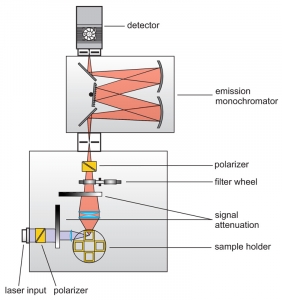 A classical spectrometer set-up is used to study singlet oxygen. The sample is excited by a pulsed or cw laser and the fluorescence is collected in the usual 90° angle orientation. The emitted fluorescence is filtered by means of a monochromator or optical filters and detected using a NIR sensitive detector. For lifetime measurements, either Time-Correlated Single Photon Counting (TCSPC) or Multi-Channel Scaling (MCS) is used for data acquisition.
A classical spectrometer set-up is used to study singlet oxygen. The sample is excited by a pulsed or cw laser and the fluorescence is collected in the usual 90° angle orientation. The emitted fluorescence is filtered by means of a monochromator or optical filters and detected using a NIR sensitive detector. For lifetime measurements, either Time-Correlated Single Photon Counting (TCSPC) or Multi-Channel Scaling (MCS) is used for data acquisition.
Consequently the essential components of a spectrometer set-up are:
- pulsed (and/or cw) excitation source
- single photon sensitive detector in the NIR
- monochromator or optical filters
- for lifetime measurements: TCSPC or MCS unit to measure the time between excitation and fluorescence emission
The photophysics of Singlet oxygen can be studied with the following systems from PicoQuant
 FluoTime 300
FluoTime 300
High performance fluorescence lifetime spectrometer
The FluoTime 300 "EasyTau" is a fully automated, high performance fluorescence lifetime spectrometer with steady-state and phosphorescence option. The system features an ultimate sensitivity with a record breaking 24.000:1 Water Raman SNR. The FluoTime 300 contains the complete optics and electronics for recording fluorescence decays by means of Time-Correlated Single Photon Counting (TCSPC) or Multichannel Scaling (MCS). The system is designed to be used with picosecond pulsed diode lasers, LEDs or Xenon lamps. Multiple detector options enable a large range of system configurations. The FluoTime 300 can be used to study fluorescence and phosphorescence decays between a few picoseconds and several seconds.
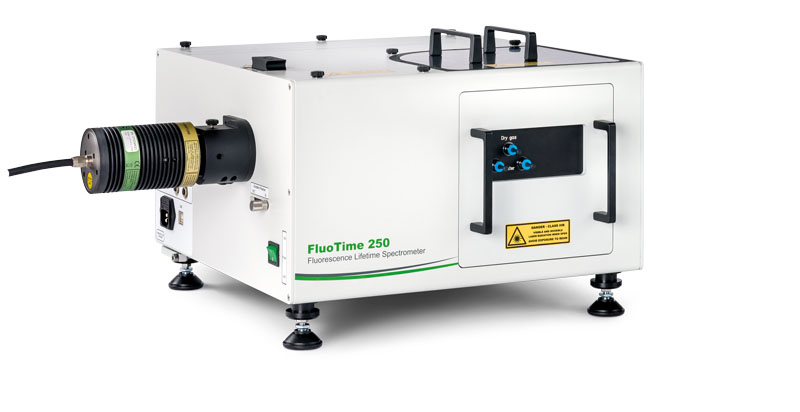 FluoTime 250
FluoTime 250
Compact and modular fluorescence lifetime spectrometer
The FluoTime 250 integrates all essential optics and electronics for time-resolved luminescence spectroscopy in a compact, fully automated device. This spectrometer is designed to assist the user in carrying out routine as well as complex measurements easily and with high reliability thanks to fully automated hardware components and a versatile system software featuring wizards providing step-by-step guidance.
 The following core components are needed to build a system capable of singlet oxygen measurements, which are (partly) available from PicoQuant:
The following core components are needed to build a system capable of singlet oxygen measurements, which are (partly) available from PicoQuant:
- Laser drivers
- Laser or LED heads
- NIR sensitive Photon Counting Detector
- TCSPC and MCS Electronics
- Analysis software
- Monochromator
- Focussing and collection optics
Steady-sate and time-resolved spectra of singlet oxygen produced by H2TTP
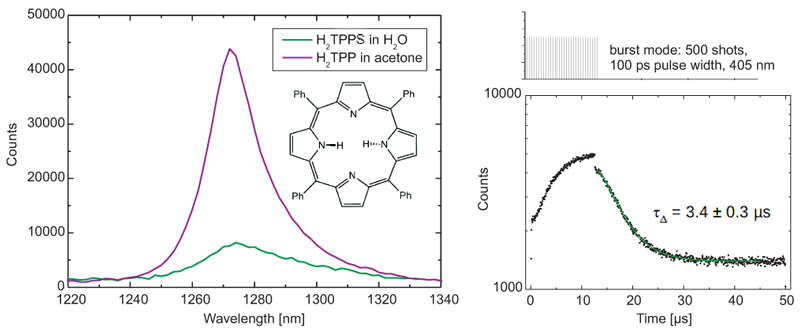
The figure on the left shows the steady-state spectrum of the singlet oxygen emission produced by H2TTPS in acetone and even in H2O, which is especially challenging due to the spectral overlap of water and singlet oxygen emission. The graph on the right additionally shows the time-resolved singlet oxygen measurement using the burst mode feature of the FluoTime 300, i.e. first multiple laser pulses are used to deposit energy into the sample and then the excitation is stopped long enough to capture the comparably slow decay of the sample. A tail fit yields a lifetime of 3.4± 0.3 µs, which is in excellent agreement with the published literature value.
Set-up:
Latest 10 publications related to Singlet oxygen
The following list is an extract of 10 recent publications from our bibliography that either bear reference or are releated to this application and our products in some way. Do you miss your publication? If yes, we will be happy to include it in our bibliography. Please send an e-mail to info@picoquant.com containing the appropriate citation. Thank you very much in advance for your kind co-operation.


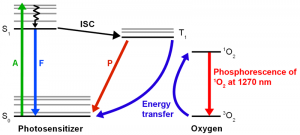
 Contact us
Contact us
 FluoTime 300
FluoTime 300

